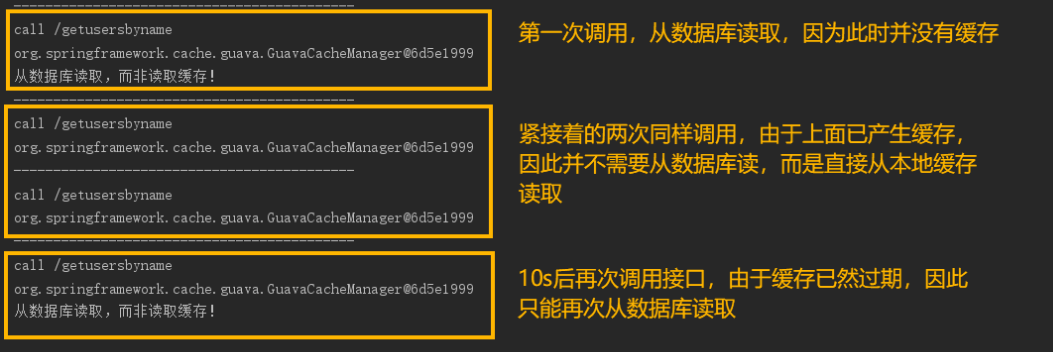本地缓存
数据类型:业务无关的小数据缓存。
常见框架:EhCache 纯Java开源缓存框架
优点:功能强大,有失效策略、最大数量设置等,缓存的持久化只有企业版才有,组件的缓存同步,可以通过jgroup来实现。
缺点:功能强大的同时,也使其更加复杂。
EhCahce的核心类:
A、CacheManager:Cache的管理类;
B、Cache:具体的cache类信息,负责缓存的get和put等操作
C、CacheConfiguration :cache的配置信息,包含策略、最大值等信息
D、Element:cache中单条缓存数据的单位
CacheManager manager = CacheManager.newInstance("src/config/ehcache.xml");
manager.addCache("testCache");
Cache test = singletonManager.getCache("testCache");
test.put(new Element("key1", "value1"));
manager.shutdown();
Cache testCache = new Cache( new CacheConfiguration("testCache", maxElements) .memoryStoreEvictionPolicy(MemoryStoreEvictionPolicy.LFU) .overflowToDisk(true) .eternal(false) .timeToLiveSeconds(60) .timeToIdleSeconds(30) .diskPersistent(false) .diskExpiryThreadIntervalSeconds(0));
Ehcache cache = cacheManager.getEhcache("xaCache");
transactionManager.begin();//开启事务
try {
Element e = cache.get(key);
Object result = complexService.doStuff(element.getValue());
cache.put(new Element(key, result));
complexService.doMoreStuff(result);
transactionManager.commit();
} catch (Exception e) {
transactionManager.rollback();
}
常见框架:guava Google提供的java工具类 很猛
Guava Cache是一个全内存的本地缓存实现,而且提供了线程安全机制,所以特别适合于代码中已经预料到某些值会被多次调用的场景。
<dependencies> <!-- Spring boot Cache--> <dependency> <groupId>org.springframework.boot</groupId> <artifactId>spring-boot-starter-cache</artifactId> </dependency> <!--for guava cache--> <dependency> <groupId>com.google.guava</groupId> <artifactId>guava</artifactId> <version>27.0.1-jre</version> </dependency> </dependencies>
引入 Guava Cache的配置文件 GuavaCacheConfig
@Configuration @EnableCaching public class GuavaCacheConfig { @Bean public CacheManager cacheManager() { GuavaCacheManager cacheManager = new GuavaCacheManager(); cacheManager.setCacheBuilder( CacheBuilder.newBuilder(). expireAfterWrite(10, TimeUnit.SECONDS).//缓存存活时间为 10 秒,缓存最大数目为 1000 个 maximumSize(1000)); return cacheManager; } }
常用注解:
@Cacheable:配置在getUsersByName方法上表示其返回值将被加入缓存。同时在查询时,会先从缓存中获取,若不存在才再发起对数据库的访问@CachePut:配置于方法上时,能够根据参数定义条件来进行缓存,其与@Cacheable不同的是使用@CachePut标注的方法在执行前不会去检查缓存中是否存在之前执行过的结果,而是每次都会执行该方法,并将执行结果以键值对的形式存入指定的缓存中,所以主要用于数据新增和修改操作上@CacheEvict:配置于方法上时,表示从缓存中移除相应数据。
测试日志:
